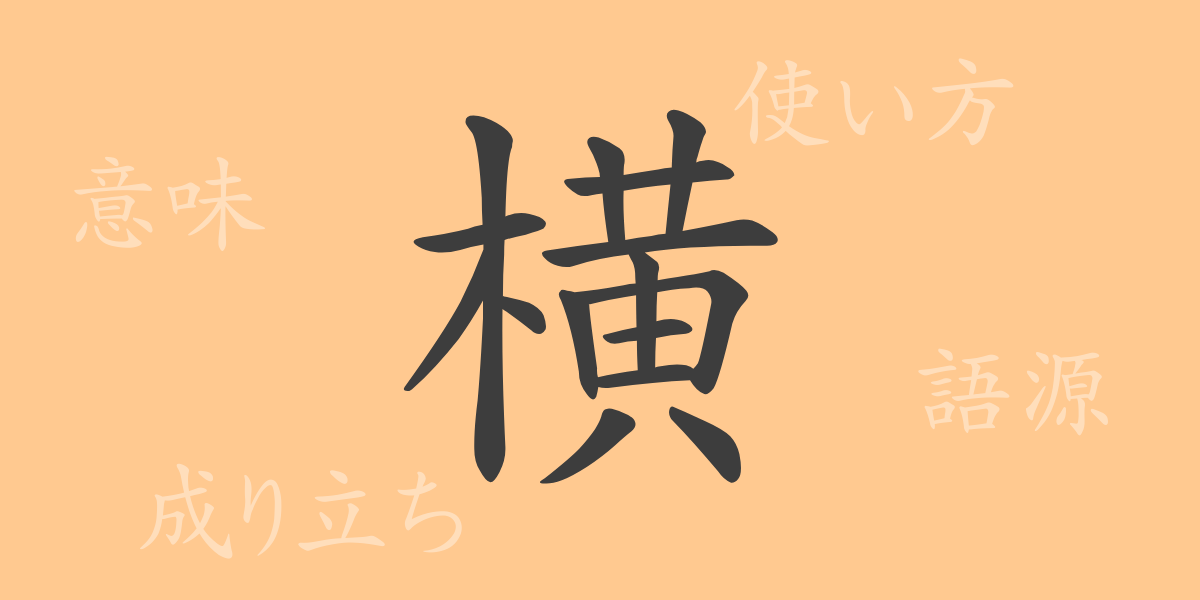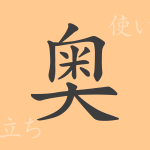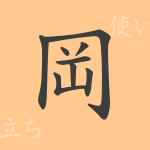“
The Japanese language contains numerous kanji characters, each possessing its own unique meaning and beauty. The common kanji “”横”” (Yoko) is one of them, frequently used in daily life. In this article, we will deeply explore everything about this kanji, from the origin of “”横”” (Yoko) to its rich meaning, usage, reading, stroke count, and radical. We will also touch upon the depth of the Japanese language through idioms, phrases, and proverbs that use “”横”” (Yoko).
The Origin (Etymology) of 横 (Yoko)
The kanji “”横”” (Yoko) is composed of a combination of “”木”” (Ki), meaning wood, and “”黄”” (ō), which serves as a phonetic component. Originally, it had the form of “”黄”” (ō) positioned above “”木”” (Ki), representing the appearance of laying wood horizontally. As time passed, this kanji came to have meanings such as “”to lie down”” and “”to spread horizontally,”” and in modern times, it is used as a word broadly referring to the “”horizontal direction.””
The Meaning and Usage of 横 (Yoko)
“”横”” (Yoko) is used as a word indicating direction and is also combined with adjectives and verbs to be used in various scenes. For example, “”横断歩道”” (ōdan hodō) refers to a pedestrian crossing that traverses a road, and “”横顔”” (Yokogao) represents a side view of the face. Additionally, “”横になる”” (Yoko ni naru) means to lie down, and “”横取りする”” (Yokodo-ri suru) means to dishonestly take someone else’s belongings.
Reading, Stroke Count, and Radical of 横 (Yoko)
To deepen our understanding of the kanji “”横”” (Yoko), let’s focus on its reading and component elements.
- Reading: On’yomi “”おう”” (ō), Kun’yomi “”よこ”” (Yoko)
- Stroke Count: 15 strokes in total
- Radical: 木部 (Kihen, wood radical)
Idioms, Phrases, and Proverbs Using 横 (Yoko) and Their Meanings
The kanji “”横”” (Yoko) appears in many idioms, phrases, and proverbs. For example, “”横綱”” (Yokozuna) refers to the highest rank in sumo wrestling, “”横顔”” (Yokogao) means a person’s side profile, and “”横行”” ( ōkō) signifies the prevalence of evil deeds. Additionally, “”横目で見る”” (Yokome de miru) means to glance sideways without looking directly, and “”横になる”” (Yoko ni naru) means to lie down. These expressions strongly reflect the lives and emotions of Japanese people.
Summary of 横 (Yoko)
The meanings and charms that each kanji character holds are the source of the rich expressive power of the Japanese language. By understanding kanji like “”横”” (Yoko), we can touch upon people’s emotions and culture through words. Through this exploration, you have likely come to know the multifaceted nature of the kanji “”横”” (Yoko) and deepened your understanding of Japanese.
“

























